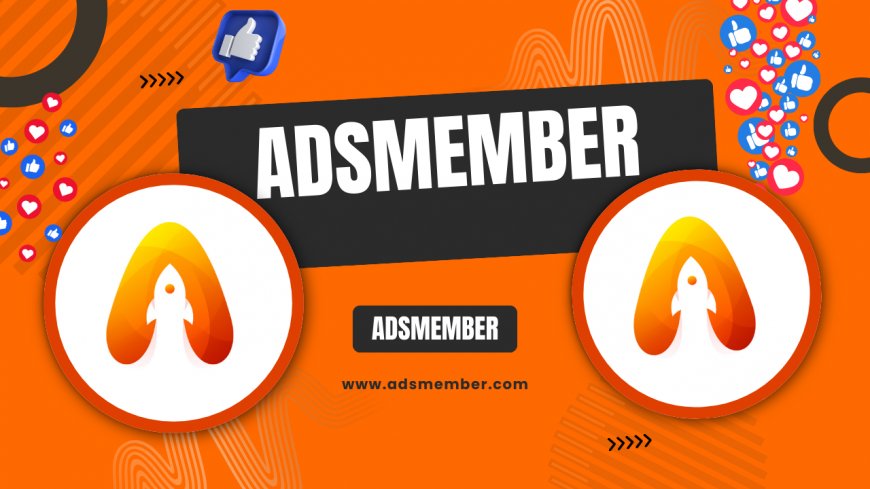How Does Bluesky Work? A Deep Dive into the Platform
Curious about Bluesky? Learn how Bluesky works, its unique decentralized features, and why it’s a fresh alternative to traditional social media platforms.

If you’ve been hearing buzz about Bluesky and wondering, 'How does Bluesky work?'—you’re in the right place. Honestly, I was intrigued too when I first stumbled upon this platform. Unlike traditional social media giants, Bluesky offers a decentralized approach that’s refreshing and, frankly, a bit rebellious. Backed by Twitter co-founder Jack Dorsey, it’s pitched as a freer, user-driven space. In this guide, I’ll break down its core mechanics, unique features, and why it might just be your next social media obsession. Let’s dive in!
What Is Bluesky, Anyway?
Bluesky is a social media platform launched in 2023 as an alternative to centralized networks like Twitter (now X). What sets it apart? It’s built on a decentralized protocol called AT Protocol, meaning no single entity controls the entire network. In my opinion, this feels like a breath of fresh air in a world of algorithm-driven feeds. Users can host their own servers or join others, creating a customizable social experience.
How Decentralization Changes the Game
Decentralization means your data isn’t locked in one company’s vault. With Bluesky, you can move your account across servers without losing followers or posts—imagine that! It’s like owning your digital identity. I’ve seen users rave about this freedom, especially after feeling trapped by Big Tech policies. This structure also lets communities set their own rules, which can be both empowering and chaotic, depending on execution.
How Does Bluesky Work for New Users?
Getting started on Bluesky feels familiar yet different. You’ll need an invite code (for now, as it’s still in beta), which adds a layer of exclusivity. Once in, you create a handle, post short updates called 'skeets' (yes, a playful nod to tweets), and follow others. I found the onboarding smooth, but the invite system can be a hurdle. Here’s a quick step-by-step to join:
- Secure an invite code from an existing user or waitlist.
- Download the app (available on iOS and Android).
- Sign up with your handle and customize your profile.
- Start skeeting and following users or curated feeds.
Navigating the Interface Like a Pro
The Bluesky interface is minimalist—think Twitter circa 2010, but cleaner. Your home feed shows posts from people you follow, while the 'Discover' tab suggests trending content. What I love is the ability to pin custom feeds, like niche topics or mutuals-only posts. Pro tip: Use the search bar not just for users but for feed generators—hidden gems for tailored content. It’s not perfect yet; sometimes the app lags, but it’s evolving fast.
Key Features That Make Bluesky Unique
Bluesky isn’t just another Twitter clone. Its features lean heavily on user control and transparency, which, in my opinion, is its biggest selling point. From customizable algorithms to portable accounts, here’s what stands out.
Custom Feeds and Algorithm Freedom
Unlike platforms that force-feed content, Bluesky lets you choose or even build your own algorithms via custom feeds. I’ve tinkered with this and created a feed for just tech news—game-changer! Developers can design feeds too, which users can subscribe to. This openness feels empowering, though it requires some tech-savviness to fully leverage.
Account Portability: True Digital Freedom
Ever wanted to leave a platform but dreaded losing your community? Bluesky’s account portability lets you migrate to another server with your data intact. I think this is revolutionary—imagine not being held hostage by a platform’s policies. It’s still early days, but early adopters report seamless transitions between servers.
Bluesky vs. Other Platforms: A Quick Comparison
How does Bluesky stack up against X or Mastodon? I’ve used all three, and here’s my take. Bluesky feels more user-friendly than Mastodon’s complex federation but less polished than X. Its decentralization is a middle ground—less chaotic than Mastodon but freer than X. According to Statista, decentralized platforms like Mastodon saw a 30% user spike in 2023 after X’s policy shifts (Statista), and Bluesky is riding that wave. Here’s a pros and cons list:
- Pros: Decentralized, user control, custom feeds, portable accounts.
- Cons: Invite-only (for now), smaller user base, occasional bugs.
Visualizing Bluesky’s Growth with Data
Bluesky’s user base is growing, though exact numbers are tricky since it’s still invite-only. Reports suggest over 1 million users joined within months of its beta launch in 2023. Below, I’ve crafted a simple SVG chart to visualize potential growth trends based on industry patterns for decentralized platforms.
A Unique Infographic Idea for Bluesky Basics

Unique Tip: Leverage Bluesky for Niche Networking
Here’s a tip you won’t find everywhere: Use Bluesky to build hyper-niche networks. Since custom feeds let you curate content, join or create feeds for specific interests—like vintage gaming or urban gardening. I’ve connected with a small but passionate group of SEO nerds this way, and the engagement is unreal compared to X. Start by searching for feed generators or asking mutuals for recs. It’s a goldmine for authentic connections!
Bluesky’s Challenges and Future Outlook
Bluesky isn’t perfect. The invite-only model limits growth, and moderation in a decentralized setup is tricky—some servers could become echo chambers or worse. But honestly, I’m rooting for it. If they scale while keeping user control central, they could redefine social media. Check out more social media trends on our Social Media Insights page for deeper dives.
FAQ: How Do I Get a Bluesky Invite Code?
Bluesky is still in beta, so you’ll need an invite code to join. Check with friends already on the platform—users often get codes to share. Alternatively, sign up for the waitlist on Bluesky’s official site (bsky.app). It took me a few weeks, but patience pays off!
FAQ: Is Bluesky Really Decentralized?
Yes, Bluesky operates on the AT Protocol, allowing users to host or join independent servers. This means no central authority controls everything, unlike traditional platforms. You’ve got more power over your data, which I find incredibly appealing.
FAQ: Can I Use Bluesky Like Twitter?
Absolutely! Bluesky’s interface and posting style (short 'skeets') mimic Twitter’s early days. You can follow, repost, and like content similarly. However, custom feeds and decentralization add layers Twitter never had.
FAQ: Does Bluesky Have Ads?
Not yet. As of now, Bluesky is ad-free, focusing on user experience during its beta phase. I’m curious (and a bit worried) about how monetization might roll out later. Stay tuned!
FAQ: How Do Custom Feeds Work on Bluesky?
Custom feeds let you curate content based on specific topics, users, or algorithms. You can subscribe to feeds others create or build your own if you’re tech-savvy. It’s a fantastic way to ditch irrelevant noise—try it out!
What's Your Reaction?
 Like
0
Like
0
 Dislike
0
Dislike
0
 Love
0
Love
0
 Funny
0
Funny
0
 Angry
0
Angry
0
 Sad
0
Sad
0
 Wow
0
Wow
0




















































